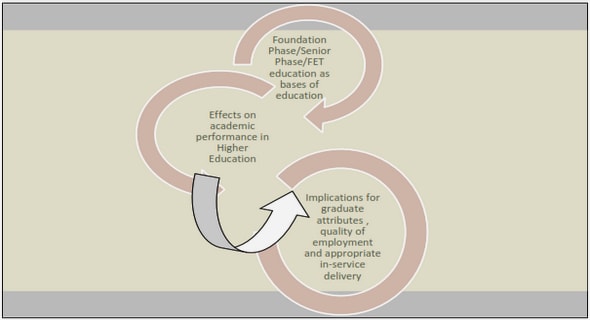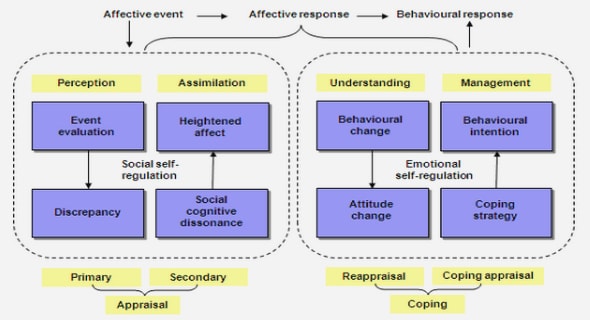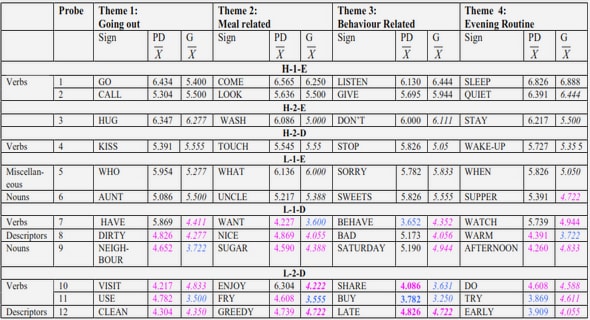Get Complete Project Material File(s) Now! »
Powdery Mildew (PM)
Powdery Mildew was the first American pathogen to be introduced in Europe. The disease was first reported in England in 1845 (Tucker, 1845), then in France in 1848, near Paris. In a few years, epidemics were reported all across the country. Notably, in 1852 and 1853, vineyards of Côtes du Rhône, Provence and Languedoc suffered heavy losses. The following year, a terrible and national epidemic of Powdery Mildew caused the loss of millions of hectolitres of wine, leading to an economic crisis for the wine industry and the migration of viticulturists to major cities or in other countries such as Algeria or Argentina (Geoffrion, 1976; Galet, 1982). After 1855, the discovery that sulfur could be used to fight the disease, and the development of methods for large-scale application, brought the disease under control in France and much of Europe.
Downy Mildew (DM)
From his observations on potato, the German botanist Scheinitz proposed in 1837 a scientific description of the suspected fungi, which he called Botrytis cana. It was later revealed that he was referring to a variation of an already known pathogen: Botrytis cinerea. In 1863, De Bary proposed the name Peronospora viticola, following his observations on the reproductive cycle of the organism. In 1888, Berlese and De Toni observed the production of sporanges and proposed to classify the pathogen in the Plasmospora genra. As a result of their work, a new scientific name was appointed, Plasmospora viticola (Global biodiversity information facility, 2019). In the current language, the name “mildiou” derivate from the English term Mildew, and the pathogen nowadays belong to the Chromista reign.
Following the devastating epidemic of Phylloxera and the introduction of American vines to reconstruct European vineyards by grafting, in 1872, Maxine Cornu expressed his concerns regarding the possible associated introduction of American pathogens. At the time, it was estimated that the beneficial use of rootstocks overcame this risk. Nevertheless, in 1878, the first case of Downy Mildew in France was reported near Coutras (Gironde). In the following fifteen years, massive epidemics were deemed responsible for the loss of about 50% of the French grapevine production. At the beginning of the XXth century, it was reported that the vintages were highly contrasted, with cycle of years of massive loss and years virtually free of disease. Years like 1908, 1910, 1915, 1921, and 1930 were referred to “Années à mildiou” in numerous text books (Siriez, Geoffrion and Roussel, 1978).
Avertissements Agricoles – Diseases and pathogens records – Dataset
The Station d’Avertissements Agricoles du Sud-Ouest (warning station) was created in 1898, in Cadillac (Gironde), by Cazeaux-Cazalet and Capus. The aim was to provide the agriculturists with information regarding the major diseases at the time, mostly by advising dates of treatments. Growers thus received telegrams regarding ongoing epidemics of pathogens known at the time (i.e. Downy Mildew, Powdery Mildew, Black Rot,…). At the same time, in Montpellier, Houdaille and Ravaz, two professors at Ecole Nationale d’Agriculture de Montpellier, created their own regional warning system. As a consequence of a terrible frost on March 26, 1898, they organized a meteorologist service that would provide the local growers with information regarding weather forecasts, frost risks, and general advices for agricultural work. This work is considered as one of the first bases of integrated pest management. Following the success of the reports, the French Parliament created in 1911 a Service Général de Météorologie Agricole. In 1914, the service was officially established as Service d’Avertissements Agricoles et de Météorologie appliquée à l’Agriculture, and dispatched in several stations across regions of agronomical importance. At the time, the directives were to (i) study the influence of meteorological phenomena on vegetation and the inverse action of vegetation on climates; (ii) contribute to the improvement of agricultural production and study rational protection against bad weather; and (iii) provide, as much as possible, a weather forecasting service and agricultural warnings.
The organization included a technical committee, a central inspection service and regional stations. In 1922, following the establishment of the national Office Météorologique, the Service d’Avertissements Agricoles was attached to the Institut National des Recherches Agronomiques (national institute of agronomic research), and moved to the Domaine de Grande Ferrade (Villenave d’Ornon, Bordeaux). Its new mission was to focus on research regarding the main crop enemies, and to determine the best cultural techniques to prevent them. In 1935, the Bordeaux station covered the departments of Gironde, Landes, Gers, Lot-et-Garonne, Charente, Charente-Inférieure, Dordogne, and Vienne (Marchal et al., 1936). From 1943 to 2008, the agricultural warnings were managed by the Service de Protection des Végétaux, and focused essentially on perennial crops. The reports progressively incorporated annual crops, such as vegetables, maize and colza.
Since 2009, plant health reports known as Bulletins de santé du végétal are issued by the Service Régionaux de l’Alimentation (SRA1), in collaboration with multiple organisms, notably DRAAF (Direction Régionale de l’Alimentation, de l’Agriculture et de la Forêt) and FREDON (Fédération Régionale de Défense contre les Organismes Nuisibles). The SRA1 is attached to the French Ministère de l’Agriculture, under the Direction Générale de l’Alimentation (Agerberg 2011). Nowadays, in the framework of the Ecophyto plan, epidemio-surveillance in French vineyards aims to:
(i) follow diseases and pests that required treatments (e.g. Downy Mildew, Powdery Mildew, Gray Mold, Tortricid Moths), and accordingly propose management strategies that takes into account modeled risks factors.
(ii) follow pests of which the monitoring is regulated by law (i.e. Flavescence dorée, submitted to mandatory declaration and treatment).
(iii) follow other bio-aggressors (e.g. viruses) or dieback monitoring (i.e. grapevine trunk diseases).
Documents layout, type of information, evolution over time
From the beginning, the warning stations issued regional reports that were sent to the growers at variable intervals. In this study, they are referred to as seasonal reports. According to field observations, and later epidemiological models, the agents proposed strategical and practices advices. The first bulletins were sent to subscribers in the form of telegrams, and consisted in short sentences, mostly advising about the necessity of treatment in the vineyard ( Appendix 3). Progressively, the content of the reports enhanced as research improved, to reach a format of about 2 to 3 pages (Appendix 4).
Since 2009, plant health reports provide farmers with weekly disease risk assessments. The reports are written by regional experts, and are based on available information and translated through their expertise. Several protocols have recently been developed to conduct risk assessments (EFSA, 2011), and the information summarized in the reports originates from several sources, such as field surveys, epidemiological model outputs, and experimental data. Weekly reports are available for free (https://agriculture.gouv.fr/bulletins-de-sante-du-vegetal) for 16 regions of agronomical importance, and send to the producers via email. The exact layout of the reports depends of the crop and the region for which it is issued, with some regions being bigger than others. As an example, the weekly reports for vineyards of the Bordeaux region are issued under the name “BSV Nord Aquitaine”. They consist in about 10 pages of information regarding: climatic data (last observations and weather forecast on the following week); statements about the general phenological status of the vineyard; a section regarding pathogen and pests epidemics, with general information about biological cycles, field observations, and risks assessments (IFV model, Raynal et al. 2006).
In addition to the weekly reports, annual reports are also available. Regarding vineyards of the Bordeaux region, the first archive that where retrieved was the annual report of the growing season 1943 (UMR SAVE, Lionel Delbac). Since then, annual reports were issued almost every year, at the end of a growing season or the beginning of the next one. They represent the main source of information of the present study (Appendix 2). The period 1970 to 1982 is missing annual reports following relocation of the warning station to another facility (Bernard Guery, pers. comm.). The layout of the annual reports is close to that of seasonal reports, but they review the entire growing season instead of focusing on weekly assessments. They consist in: an inventory of the plot network, a climatic review of the growing season, a phenological status through time of the vineyards, and a review of the biotic and abiotic pressures during the growing season.
Important definitions in plant diseases epidemics
Plant epidemiology is defined as “the science of populations of pathogens in populations of host plants, and the diseases resulting therefrom under the influence of the environment and human interferences” (Kranz, 1990). It involves the disease triangle of host, pathogen, and environment. Environment can be divided as abiotic and biotic components. Abiotic disorders are caused by non-living factors, such as weather conditions, mechanical or chemical injuries, soil, nutrients balance. Abiotic disorders are more likely to occur to several types of plants, and not to spread from plant to plant. On the other hand, biotic stresses or disorders are caused by living organisms, such as fungi, bacteria, insects, or virus. Biotic disorders are more likely to be species dependant, and spread from one plant of a susceptible species to another plant of the same species. Although some symptoms for abiotic and biotic disorders can appear as visually similar, a more precise observation and examination of the surroundings of a symptomatic plant can lead to differentiate the nature of a disorder. In the case of biotic disorders, symptomatic plants are affected by a living organism, which can be directly seen (e.g. Red spider mite), or assessed through its reproductive organs (e.g. Powdery mildew conidia, on the under surface of a leaf). Diseases can affect the visible organs of a plant, or other organs that are far less visible (e.g. white rot in the case of grapevine trunk diseases). The present study focuses on biotic disorders caused by Downy Mildew, Powdery Mildew, Black Rot, Gray Mold, and to a lesser extent pests like Tortricid Moths.
Disease assessment or disease estimation is the starting point in the characterization of an epidemic, and the base for following analyses and interpretation. Plant pathologists have been attempting to obtain quantitative information on disease severity through visual assessment for over a century (Cobb, 1892). Usually, the observer reports an estimate of the area of the specimen that is affected by the disease. The assumption is that the observers make reasonable estimates of the relative affected area by visual inspection, with or without the help of specific lecture grids (Madden, Hughes and Van den Bosch, 2007). In the present study, visual observation is the main method used by the experts to characterize epidemics in the annual plant health reports (EFSA, 2011). The experts used qualitative data (or key-words) during the longest period (1940 to 2018) to express their results in the plant health reports.
Phytopathology is a science defined by some core concepts. Like in any other science, definitions can vary among the authors, and some terms have close meanings and can be misused, voluntarily or not (Seem, 1984; Lilienfeld et al., 2015). For consistency purpose, the following definitions are extracted from the work of Madden, Hughes, and Van den Bosch (2007). Epidemic is defined as “a change in disease intensity in a host population over time and space”. Therefore, it is a dynamic process, of which the study involve characterizing rates of change; in population, space, and time. Indeed, epidemics do not exist at the same intensity everywhere at a given time. As an example, in perennial crops, the intensity of a foliar disease tends to increase during the growing season, and will eventually decrease at the end of the season as defoliation occurs.
Incidence is used to measure the proportion of plants units diseased (or the number diseased) out of the total number of plants observed. As there can be different types of plant units, there can be different types of incidence. As an example, one can assess the plant at the organs level, at the whole plant level, or at the field level. According to the definition of the BSV, “mean frequency of attack” is a measure of incidence. As a result, in Chapter 2, mean frequency of attack is the number of affected organs, on the total number of observed organs. The term disease prevalence is also a measure of incidence, but it is used at the field level. Prevalence is defined as a proportion or number of fields with diseased plants. In the case of our study, disease prevalence refers to the proportion of diseased fields, on the total number of observations (i.e. “parcelles de reference”) on the BSV/IFV plots networks. In Chapter 1, as explained in more depth in section 3.2.1, the disease prevalence is assigned to a class value (i.e. “local” or “general”). In Chapter 2, as explained in section 4.2.2, according to the source material, mean prevalence is a continuous value, measured at the plot level.
In order to assess the degree of infection of a host, the severity can be measured. The term disease severity is used to assess the area of plant tissue affected by a disease. It can be relative or absolute, and is generally expressed as the proportion (or percentage) of host area affected. In Chapter 1, severity is a discrete variable assigned to a class value (i.e. “null”, “low”, “medium”, or “high”). Intensity, as a general term, characterizes “the magnitude of disease or infection”. However, it can also be used to encompass disease incidence and severity. In the case of our study, and in order to stay true to the original material, the term intensity is used in Chapter 2 in accordance with how it is defined in the BSV. Therefore, the “mean intensity of attack” represents the surface of the plant occupied by the disease, on the total surface observed. In other words, severity is a discrete class value in Chapter 1, and intensity is a continuous value measured in Chapter 2, and both refer to the area of the plant infected.
Search for the highest indicator of an epidemics
In order to assess the highest indicator for each of the studied diseases, and throughout the study, information regarding the epidemics was extracted close to veraison. Indeed, veraison represents the period up to where grapes are the most susceptible to Downy Mildew, Powdery Mildew and Black Rot (Calonnec et al., 2004; Rossi, Caffi and Gobbin, 2013; Fermaud et al., 2016). Veraison exact date is year, region, and variety dependant. Nevertheless, in the Bordeaux region, the phenological stage can be estimated to take place around days 200 to 250, i.e. between the end of July and to month of August (Parker et al., 2011; De Cortázar-Atauri et al., 2017). For GM, information regarding the epidemics were extracted close to harvest, as it is the period were grapes express most of the disease symptoms.
Relationships in plant disease epidemics
The data set of Chapter 2 (quantitative date from annual BSV and IFV original data, on the period 2010-2018) consisted in numerous variables regarding the epidemics of DM, PM, and BR. For each of the three diseases, the following information were available: intensity on leaves, intensity on clusters, frequency on leaves, and frequency on clusters, at fifteen and up to twenty two times for each of the eight years. The incidence-severity relationship fall into three categories of analysis: correlation and regression, multiple infection methods, and measurement of aggregation (Seems 1984). In this study, we were able to use correlation and regression analyses in order to characterize this relationships, and transform a large number of variables into a simpler set of variables. Correlation indicates the degree to which two variables are linearly associated, without indicating the nature of the relationship. When the correlation is significant, the similarity of the two variables allows the analyst to use of either one of the values for disease assessment (Gorter, 1974). This process was used in Chapter 2 in order to simplify the use of the many variables available, and was applied to the datasets in 4.2.2 and 4.2.3.
Table of contents :
1. INTRODUCTION
2. LITERATURE REVIEW
2.1. Vineyard’s pests and pathogens
2.2. Avertissements Agricoles – Diseases and pathogens records – Dataset
2.3. Presentation of the main principles used
3 CHAPTER 1: Historical characterization of diseases and pests pressure in the Bordeaux vineyard from 1940 to 2018.
3.1 Method
3.1.1 Presentation of the dataset
3.2.1 Construction of the scale
3.1.2 Statistical analyses
3.1.3 Secondary bio-aggressors
3.2 Results
3.3 Discussion
4 CHAPTER 2: Characterization of diseases pressure in the Bordeaux vineyard, a focus on 2010-2018.
4.1 Method
4.1.1 Presentation of the dataset
4.1.2 BSV 2010-2018
4.1.3 IFV ratings: field ratings and survival curve indices
4.1.4 Field ratings
4.1.5 Survival curves
4.2 Results
4.2.1 BSV indexes
4.2.2 Indices IFV
4.2.3 Survival curves
4.2.4 Comparison of the datasets
4.3 Discussion
5. GENERAL DISCUSSION
6. CONCLUSION AND PERSPECTIVES
REFERENCES


